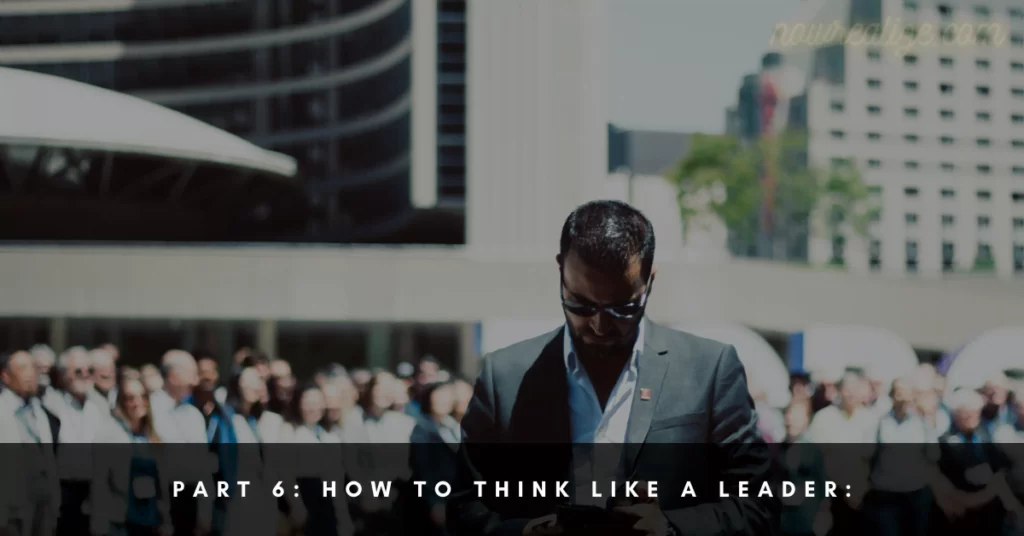
Table of Contents
- Introduction:
- Part 1: Belief in Yourself
- Part 2: A Peaceful Mind Generates Power:
- Part 3: How to Get People to Like You:
- Part 4: How to Conquer Fear:
- Part 5: How to Build Confidence in Yourself:
- Part 6: How to Think Like a Leader:
- Part 7: How to Increase Your Incomes:
- Part 8: The Power of Prayer:
- Part 9: The Power of Positive Living:
- Part 10: Putting It All Together:
- Epilogue: Embracing the Power of Positive Thinking:
- Conclusion:
Introduction:
In his self-help book “The Power of Positive Thinking,” Norman Vincent Peale emphasized the value of adopting an optimistic outlook on life. The book provides practical techniques and advice on how to cultivate a positive mindset, increase self-confidence, and overcome negative thoughts and worries. Peale argues that the power of positive thinking can have a transformative effect on an individual’s life, leading to greater happiness, success, and personal fulfillment.
Through real-life examples and anecdotes, the author encourages readers to harness the power of faith, prayer, and visualization to achieve their goals and dreams. Published in 1952, “The Power of Positive Thinking” has become a classic in the field of personal development and has inspired millions of readers worldwide.
Part 1: Belief in Yourself

Believe in Yourself:
The first chapter of this section emphasizes the importance of believing in oneself. Peale argues that having confidence in our abilities and trusting our instincts is essential for achieving success in life. He provides readers with practical tips and strategies for developing a strong sense of self-belief, such as using positive affirmations, visualizing success, and surrounding ourselves with positive influences.
One of the key takeaways from this chapter is the importance of positive self-talk. Peale suggests that we should consciously monitor our thoughts and replace negative self-talk with positive affirmations. For example, instead of saying “I can’t do this,” we should say “I can do this, and I will succeed.” By changing the way we talk to ourselves, We may cultivate a more upbeat and assured outlook.
A Peaceful Mind Generates Power:
In the second chapter of this section, Peale emphasizes the importance of cultivating a calm and peaceful mindset. He argues that when we are stressed or anxious, our minds are unable to function at their full potential, and we are less able to make good decisions or achieve our goals. Peale provides readers with tips for reducing stress and cultivating a peaceful mindset, such as practicing meditation, taking deep breaths, and spending time in nature.
One of the key takeaways from this chapter is the importance of taking care of our mental and emotional health. Peale suggests that we should prioritize activities that help us to feel calm and centered, such as yoga, mindfulness meditation, or journaling. By taking care of our mental health, we can develop the inner resources we need to overcome challenges and achieve our goals.
How to Have Constant Energy:
The third chapter of this section focuses on the importance of maintaining high levels of energy in order to achieve success. Peale argues that when we are feeling tired or drained, we are less able to focus on our goals and make progress toward them. He provides readers with tips for maintaining high levels of energy, such as getting enough sleep, eating a healthy diet, and exercising regularly.
One of the key takeaways from this chapter is the importance of self-care. Peale suggests that we should prioritize activities that help us to feel energized and refreshed, such as taking a walk outside, listening to uplifting music, or spending time with friends and family. By taking care of our physical health, we can develop the energy and stamina we need to achieve our goals.
Try Prayer Power:
The fourth chapter of this section introduces the concept of prayer as a tool for developing a positive mindset and achieving success. Peale argues that prayer can help us to tap into a higher power and access the resources we need to achieve our goals. He provides readers with tips for using prayer to cultivate a positive mindset, such as visualizing success, expressing gratitude, and focusing on positive affirmations.
One of the key takeaways from this chapter is the importance of faith. Peale suggests that by cultivating a strong faith in a higher power, we can access a source of strength and inspiration that can help us to overcome challenges and achieve our goals. By incorporating prayer into our daily routine, we can develop a more positive and hopeful outlook on life.
Conclusion:
In conclusion, the first part of “The Power of Positive Thinking” emphasizes the importance of believing in oneself, cultivating a peaceful mindset, maintaining high levels of energy, and using prayer to tap into a higher power.
Part 2: A Peaceful Mind Generates Power:

In the second part of “The Power of Positive Thinking,” Norman Vincent Peale focuses on the power of a peaceful mind to generate positive energy and promote healing. In this blog post, we will take a closer look at the key ideas presented in this section and explore how they can be applied to our lives.
How to Use Faith in Healing:
The first chapter of this section introduces the idea that faith can be a powerful tool for promoting healing. Peale argues that by cultivating a strong faith in a higher power, we can tap into a source of positive energy that can help us to overcome illness and injury. He provides readers with tips for using faith to promote healing, such as practicing prayer and visualization, seeking out positive influences, and cultivating a positive mindset.
One of the key takeaways from this chapter is the importance of cultivating a sense of hope and optimism. Peale suggests that by focusing on positive outcomes and maintaining a sense of faith in the face of adversity, we can tap into a powerful source of healing energy.
When Vitality Sags, Try This Health Formula:
The second chapter of this section provides readers with a practical formula for maintaining good health and vitality. Peale argues that by taking care of our physical health through exercise, nutrition, and self-care, we can cultivate a sense of positive energy that can assist us in achieving our objectives and overcoming obstacles.
One of the key takeaways from this chapter is the importance of self-discipline. Peale suggests that by setting goals for ourselves and taking consistent action towards achieving them, we can develop a sense of self-confidence and positive energy that can help us achieve success in all areas of our lives.
Expect a Miracle:
The third chapter of this section introduces the idea that miracles can happen in our lives when we cultivate a positive mindset and strong faith in a higher power. Peale provides readers with tips for cultivating a sense of faith and expectancy in their lives, such as using positive affirmations, practicing visualization, and seeking out positive influences.
One of the key takeaways from this chapter is the importance of cultivating a sense of gratitude for the blessings in our lives. Peale suggests that by focusing on the positive aspects of our lives and expressing gratitude for them, we can tap into a powerful source of positive energy that can help us achieve our goals and overcome challenges.
How to Break the Worry Habit and Achieve a Feeling of Security:
The fourth chapter of this section focuses on the power of a peaceful mind to overcome worry and anxiety. Peale argues that by developing a strong sense of faith in a higher power and cultivating a sense of inner peace, we can overcome worry and achieve a sense of security in our lives. He provides readers with practical tips for breaking the worry habit, such as practicing positive self-talk, developing a sense of faith, and seeking out positive influences.
One of the key takeaways from this chapter is the importance of developing a strong sense of inner peace. Peale suggests that by prioritizing activities that help us to feel calm and centered, such as meditation, yoga, or spending time in nature, we can cultivate a sense of inner peace that can help us overcome worry and anxiety.
Conclusion:
The second part of “The Power of Positive Thinking” emphasizes the power of a peaceful mind to generate positive energy, promote healing, and overcome worry and anxiety. By cultivating a strong sense of faith in a higher power, developing a positive mindset, and prioritizing self-care and self-discipline, we can tap into a powerful source of positive energy that can help us to achieve success in all areas of our lives.
Part 3: How to Get People to Like You:

In the third part of “The Power of Positive Thinking,” Norman Vincent Peale focuses on the power of positive thinking in our interactions with others. In this blog post, we will take a closer look at the key ideas presented in this section and explore how they can be applied to our lives.
If You Must Be Obnoxious, Be Nice:
The first chapter of this section introduces the idea that even if we have to deliver bad news or criticism, we can still do so in a way that is kind and respectful. Peale argues that by approaching difficult conversations with a positive mindset and a sense of empathy, we can maintain positive relationships with others and avoid creating unnecessary conflicts.
One of the key takeaways from this chapter is the importance of treating others with respect and kindness, even in difficult situations. Peale suggests that by focusing on positive outcomes and maintaining a sense of empathy, we can cultivate positive relationships with others and avoid creating unnecessary conflicts.
How to Think Your Way to Success:
The second chapter of this section focuses on the power of positive thinking in achieving success. Peale argues that by cultivating a positive mindset and visualizing our goals, we can tap into a powerful source of positive energy that can help us to achieve success in all areas of our lives.
One of the key takeaways from this chapter is the importance of focusing on positive outcomes and visualizing our goals. Peale suggests that by setting clear goals for ourselves and maintaining a positive mindset, we can tap into a powerful source of positive energy that can help us achieve our goals and overcome obstacles.
How to Create Your Own Happiness:
The third chapter of this section introduces the idea that we can create our own happiness by cultivating a positive mindset and focusing on the positive aspects of our lives. Peale provides readers with tips for cultivating a sense of happiness and contentment, such as practicing gratitude, seeking out positive influences, and developing a positive mindset.
One of the key takeaways from this chapter is the importance of cultivating a sense of gratitude for the blessings in our lives. Peale suggests that by focusing on the positive aspects of our lives and expressing gratitude for them, we can tap into a powerful source of positive energy that can help us achieve happiness and contentment.
Stop Fuming and Fretting:
The fourth chapter of this section focuses on the power of positive thinking in overcoming negative emotions such as anger and frustration. Peale argues that by developing a positive mindset and practicing self-control, we can overcome negative emotions and maintain positive relationships with others.
One of the key takeaways from this chapter is the importance of maintaining a positive mindset and practicing self-control in difficult situations. Peale suggests that by approaching difficult situations with a positive mindset and maintaining a sense of empathy, we can overcome negative emotions and maintain positive relationships with others.
Conclusion:
The third part of “The Power of Positive Thinking” emphasizes the power of positive thinking in our interactions with others and in achieving success and happiness in our lives. By treating others with respect and kindness, focusing on positive outcomes and visualizing our goals, and cultivating a sense of gratitude and positivity, we can tap into a powerful source of positive energy that can help us achieve success in all areas of our lives.
Part 4: How to Conquer Fear:

In the fourth and final part of “The Power of Positive Thinking,” Norman Vincent Peale focuses on the power of positive thinking in conquering fear. In this blog post, we will take a closer look at the key ideas presented in this section and explore how they can be applied to our lives.
How to Cure Fear
The first chapter of this section introduces the idea that fear can be overcome through the power of positive thinking. Peale argues that by developing a positive mindset and focusing on positive outcomes, we can overcome fear and achieve success in all areas of our lives.
One of the key takeaways from this chapter is the importance of facing our fears head-on and developing a positive mindset. Peale suggests that by visualizing positive outcomes and focusing on our strengths and abilities, we can overcome fear and achieve success in all areas of our lives.
How to Banish Fear of Ill Health
The second chapter of this section focuses on the fear of ill health and how it can be overcome through the power of positive thinking. Peale argues that by maintaining a positive mindset and focusing on our health and well-being, we can banish the fear of ill health and achieve optimal health.
One of the key takeaways from this chapter is the importance of focusing on our health and well-being and maintaining a positive mindset. Peale suggests that by adopting healthy habits and focusing on positive outcomes, we can banish the fear of ill health and achieve optimal health.
The Power of Words
The third chapter of this section introduces the idea that the words we use can have a powerful impact on our mindset and emotions. Peale argues that by using positive words and affirmations, we can cultivate a positive mindset and overcome fear and negativity.
One of the key takeaways from this chapter is the importance of using positive words and affirmations to cultivate a positive mindset. Peale suggests that by focusing on positive outcomes and using positive language, we can overcome fear and negativity and achieve success in all areas of our lives.
How to Have a “Miracle Mindset”
The fourth and final chapter of this section focuses on the power of the “miracle mindset.” Peale argues that by developing a positive mindset and trusting in a higher power, we can tap into a powerful source of positive energy that can help us to overcome fear and achieve success in all areas of our lives.
One of the key takeaways from this chapter is the importance of trusting in a higher power and cultivating a positive mindset. Peale suggests that by focusing on positive outcomes and trusting in a higher power, we can tap into a powerful source of positive energy that can help us to overcome fear and achieve success in all areas of our lives.
Conclusion:
The fourth part of “The Power of Positive Thinking” emphasizes the power of positive thinking in conquering fear and achieving success in all areas of our lives. By facing our fears head-on, maintaining a positive mindset, using positive words and affirmations, and trusting in a higher power, we can tap into a powerful source of positive energy that can help us to overcome fear and achieve success in all areas of our lives.
Part 5: How to Build Confidence in Yourself:

In the fifth and final part of “The Power of Positive Thinking,” Norman Vincent Peale focuses on building confidence in ourselves. In this blog post, we will take a closer look at the key ideas presented in this section and explore how they can be applied to our lives.
How to Sell Yourself to Others
The first chapter of this section introduces the idea that we can build confidence in ourselves by learning how to sell ourselves to others. Peale argues that by developing effective communication skills and presenting ourselves in a positive light, we can build confidence in ourselves and achieve success in all areas of our lives.
One of the key takeaways from this chapter is the importance of effective communication skills and presenting ourselves in a positive light. Peale suggests that by developing these skills, we can build confidence in ourselves and achieve success in all areas of our lives.
The Challenge of Aging
The second chapter of this section focuses on the challenge of aging and how we can maintain our confidence as we get older. Peale argues that by maintaining a positive mindset and focusing on our strengths and abilities, we can overcome the challenges of aging and maintain our confidence throughout our lives.
One of the key takeaways from this chapter is the importance of maintaining a positive mindset and focusing on our strengths and abilities. Peale suggests that by doing so, we can overcome the challenges of aging and maintain our confidence throughout our lives.
How to Get the Best Out of People
The third chapter of this section introduces the idea that we can build confidence in ourselves by learning how to get the best out of people. Peale argues that by treating others with respect and focusing on their strengths and abilities, we can build strong relationships and achieve success in all areas of our lives.
One of the key takeaways from this chapter is the importance of treating others with respect and focusing on their strengths and abilities. Peale suggests that by doing so, we can build strong relationships and achieve success in all areas of our lives.
The Power of Enthusiasm
The fourth and final chapter of this section focuses on the power of enthusiasm and how it can help us to build confidence in ourselves. Peale argues that by cultivating enthusiasm and focusing on positive outcomes, we can build confidence in ourselves and achieve success in all areas of our lives.
One of the key takeaways from this chapter is the importance of cultivating enthusiasm and focusing on positive outcomes. Peale suggests that by doing so, we can build confidence in ourselves and achieve success in all areas of our lives.
In conclusion,
The fifth part of “The Power of Positive Thinking” emphasizes the importance of building confidence in ourselves. By developing effective communication skills, maintaining a positive mindset, treating others with respect, and cultivating enthusiasm, we can build confidence in ourselves and achieve success in all areas of our lives.
Part 6: How to Think Like a Leader:

In Part 6 of “The Power of Positive Thinking,” Norman Vincent Peale focuses on how to think like a leader. In this blog post, we will take a closer look at the key ideas presented in this section and explore how they can be applied to our lives.
The Power of Positive Thinking in Business:
The first chapter of this section introduces the idea that positive thinking can have a powerful impact on business success. Peale argues that by cultivating a positive mindset and focusing on opportunities rather than obstacles, we can achieve success in business and in life.
One of the key takeaways from this chapter is the importance of cultivating a positive mindset and focusing on opportunities rather than obstacles. Peale suggests that by doing so, we can achieve success in business and in life.
How to Build a Successful Marriage:
The second chapter of this section focuses on building a successful marriage. Peale argues that by cultivating positive communication skills and focusing on the strengths and positive qualities of our partner, we can build a strong and successful marriage.
One of the key takeaways from this chapter is the importance of positive communication skills and focusing on the strengths and positive qualities of our partner. Peale suggests that by doing so, we can build a strong and successful marriage.
How to Draw Upon That Higher Power:
The third chapter of this section introduces the idea that we can draw upon a higher power to achieve success in all areas of our lives. Peale argues that by developing a relationship with a higher power, we can tap into a source of infinite wisdom and guidance.
One of the key takeaways from this chapter is the importance of developing a relationship with a higher power. Peale suggests that by doing so, we can tap into a source of infinite wisdom and guidance.
Try Prayer Power at Work:
The fourth and final chapter of this section focuses on how to apply the principles of positive thinking in the workplace. Peale argues that by cultivating a positive attitude and relying on prayer power, we can achieve success and overcome obstacles in the workplace.
One of the key takeaways from this chapter is the importance of cultivating a positive attitude and relying on prayer power in the workplace. Peale suggests that by doing so, we can achieve success and overcome obstacles in the workplace.
In conclusion:
Part 6 of “The Power of Positive Thinking” emphasizes the importance of positive thinking and the role it plays in achieving success in all areas of our lives, including business, marriage, and the workplace. By cultivating a positive mindset, focusing on opportunities and strengths, developing a relationship with a higher power, and relying on prayer power, we can achieve success and overcome obstacles in our lives.
Part 7: How to Increase Your Incomes:

“The Power of Positive Thinking” by Norman Vincent Peale is a classic self-help book that offers practical advice on how to lead a happier and more fulfilling life. In this post, we will explore the final four chapters of the book, which provide guidance on how to increase your income, stay young in spirit, create “magic” in your life, and use faith to overcome fear and worry.
How to Increase Your Incomes:
Peale starts this chapter by pointing out that many people have limiting beliefs about money and wealth. They believe that money is hard to come by, or that it’s somehow wrong to be wealthy. Peale argues that these beliefs are not only false but also harmful, as they prevent people from realizing their full potential.
To increase your income, Peale suggests several strategies, including setting clear financial goals, developing a positive attitude towards money, and learning how to sell yourself and your ideas effectively. He also emphasizes the importance of hard work and persistence and encourages readers to be open-minded and creative in their approach to making money.
How to Stay Young in Spirit Forever:
In this chapter, Peale offers advice on how to maintain a youthful and optimistic outlook on life, no matter your age. He encourages readers to cultivate a sense of wonder and curiosity, to keep learning and exploring new things, and to maintain a positive attitude toward change.
Peale also stresses the importance of staying physically active and healthy, as well as maintaining close relationships with friends and family. He suggests that spending time in nature, practicing relaxation techniques like meditation or yoga, and pursuing hobbies and passions can all help to keep you feeling young and vibrant.
How to Create “Magic” in Your Life:
Peale uses the term “magic” to describe the sense of wonder and joy that can come from experiencing the beauty and abundance of the world around us. In this chapter, he provides practical advice on how to cultivate a sense of magic in your own life.
Peale suggests that you start by focusing on the positive aspects of your life and surroundings, and by developing an appreciation for beauty and creativity. He encourages readers to take time to notice the small details and wonders of everyday life, and to cultivate a sense of gratitude for the blessings in their lives.
Peale also emphasizes the importance of developing a spiritual practice, whether that means attending church or simply taking time for quiet reflection and meditation. By connecting with something greater than themselves, he argues, people can tap into a sense of awe and wonder that can help to bring more magic into their lives.
How to Use Faith to Overcome Fear and Worry:
In the final chapter of the book, Peale returns to the theme of faith and its power to transform our lives. He argues that faith can be a powerful tool for overcoming fear and worry, two of the most common obstacles to happiness and success.
Peale suggests that the first step in using faith to overcome fear and worry is to develop a clear and positive image of what you want to achieve. By focusing on a positive goal, he argues, you can begin to shift your mindset away from fear and towards confidence and optimism.
Peale also emphasizes the importance of prayer and meditation as a way of connecting with a higher power and accessing the strength and guidance that faith can provide. By cultivating a strong and positive relationship with your own faith, he argues, you can overcome even the most daunting challenges and achieve the success and happiness you desire.
Conclusion:
“The Power of Positive Thinking” offers valuable advice on how to live a more fulfilling and joyful life. Whether you’re looking to increase your income, stay young in spirit, create more magic in your life, or overcome fear and worry, Peale’s practical and inspiring guidance can help you achieve your goals and live your best life.
Part 8: The Power of Prayer:

“The Power of Positive Thinking” by Norman Vincent Peale is a book that provides practical advice on how to live a happier and more fulfilling life. In this post, we will explore the final four chapters of the book, which focus on the power of prayer and its ability to transform our lives.
The Purpose of Prayer:
In this chapter, Peale emphasizes the importance of prayer as a way of connecting with a higher power and accessing the guidance and strength that it can provide. He argues that prayer can be a powerful tool for transforming our lives, as it allows us to tap into a source of wisdom and power that is greater than our own.
Peale also stresses the importance of developing a consistent and dedicated prayer practice, whether that means setting aside a few minutes each day to pray or attending regular religious services. By making prayer a regular part of your life, he argues, you can experience a greater sense of peace, purpose, and fulfillment.
The Prayer That Never Fails:
In this chapter, Peale offers his perspective on what he considers to be the “prayer that never fails.” According to Peale, this prayer is a simple and powerful affirmation that can be used to bring about positive change in any area of your life.
The affirmation goes like this: “I believe that God is now doing for me all the things which I need to have done, and I relax in complete confidence and trust.” Peale encourages readers to repeat this affirmation regularly, focusing on it with faith and confidence, and trusting that the universe will provide them with everything they need.
How to Use Affirmative Prayer:
In this chapter, Peale guides how to use affirmative prayer as a way of affirming positive beliefs and intentions. He argues that affirmative prayer can be a powerful tool for bringing about positive change in your life, as it allows you to focus your mind and energy on your desired outcomes.
Peale suggests that when using affirmative prayer, it’s important to focus on positive outcomes and avoid negative or limiting beliefs. He also emphasizes the importance of faith and belief and encourages readers to approach affirmative prayer with a sense of confidence and trust in the power of the universe to bring about positive change.
The Power of Unconditional Love:
In the final chapter of the book, Peale explores the power of unconditional love and its ability to transform our lives. He argues that unconditional love is the key to living a happy and fulfilling life, as it allows us to connect with others in a deep and meaningful way.
Peale suggests that cultivating unconditional love begins with accepting and loving ourselves, flaws and all. He also emphasizes the importance of forgiving others and letting go of resentments and negative emotions, as these can block us from experiencing the true power of love.
Finally, Peale encourages readers to cultivate a sense of compassion and empathy towards others, recognizing that we are all connected and that by loving and supporting one another, we can create a better environment for present and future generations.
Conclusion:
“The Power of Positive Thinking” offers valuable guidance on the power of prayer and its ability to transform our lives. By developing a consistent and dedicated prayer practice, using affirmative prayer to affirm positive beliefs and intentions, and cultivating a sense of unconditional love and compassion towards ourselves and others, we can tap into the power of the universe and live a happier and more fulfilling life.
Part 9: The Power of Positive Living:

“The Power of Positive Thinking” by Norman Vincent Peale is a timeless classic that offers practical guidance on how to live a happier and more fulfilling life. In this post, we will explore the final four chapters of the book, which focus on the power of positive living and the tools we can use to cultivate a positive mindset.
The Power of Positive Living:
In this chapter, Peale emphasizes the importance of developing a positive mindset and the impact it can have on our lives. He argues that by focusing on positive thoughts and beliefs, we can overcome challenges and achieve our goals.
Peale suggests that cultivating a positive mindset begins with practicing positive self-talk, affirming positive beliefs, and focusing on the good in life. He also encourages readers to surround themselves with positive people and to seek out opportunities to learn and grow.
How to Develop a Powerful Self-Image:
In this chapter, Peale explores the concept of self-image and its impact on our lives. He argues that the way we see ourselves can influence everything from our relationships to our career success.
Peale suggests that developing a powerful self-image begins with affirming positive beliefs about ourselves and focusing on our strengths and accomplishments. He also encourages readers to set realistic goals and to take action towards achieving them, as this can help to build confidence and self-esteem.
How to Overcome Negative Thoughts:
In this chapter, Peale provides guidance on how to overcome negative thoughts and beliefs that can hold us back. He argues that negative thoughts can be a powerful force in our lives, but that we can learn to overcome them with the right tools and mindset.
Peale suggests that one way to overcome negative thoughts is to replace them with positive affirmations and beliefs. He also emphasizes the importance of focusing on the present moment and not dwelling on past mistakes or future worries.
The Power of Gratitude:
In the final chapter of the book, Peale explores the power of gratitude and its ability to transform our lives. He argues that cultivating a sense of gratitude can help us to focus on the positive in life and to appreciate the blessings we have.
Peale suggests that cultivating gratitude begins with focusing on the good in life, even in difficult situations. He also encourages readers to express gratitude to others and to focus on the things they are thankful for.
Conclusion:
“The Power of Positive Thinking” offers valuable guidance on the power of positive living and the tools we can use to cultivate a positive mindset. By developing a positive self-image, affirming positive beliefs, overcoming negative thoughts, and cultivating a sense of gratitude, we can tap into the power of the universe and live a happier and more fulfilling life.
Part 10: Putting It All Together:

Putting It All Together: The Power of Positive Thinking and Faith:
Positive thinking and faith are two powerful tools that can help us live a more fulfilling and happy life. By adopting a positive mental attitude, we can transform our thoughts and beliefs, and ultimately change our behavior and the outcomes we experience in life. Likewise, by cultivating faith and trust in a higher power, we can find comfort, guidance, and inspiration even in the face of adversity.
How to put these two practices together and develop a positive outlook on life that is grounded in faith and optimism. We will cover the following topics:
The Practice of Positive Thinking
Positive thinking is a practice that involves consciously choosing to focus on the positive aspects of life, rather than dwelling on the negative. It involves reframing negative thoughts and beliefs into positive ones and cultivating a sense of gratitude and optimism about the present and future.
To develop a positive mindset, it can be helpful to engage in daily practices such as affirmations, visualization, and gratitude journaling. Affirmations involve repeating positive statements about yourself or your life, such as “I am worthy of love and success.” Visualization involves imagining yourself achieving your goals and experiencing positive outcomes. Gratitude journaling involves writing down three things you are grateful for each day, which can help shift your focus from what you lack to what you have.
The Positive Power of Prayer and Faith:
Prayer and faith can be powerful tools for cultivating positivity and resilience in the face of adversity. By praying regularly and cultivating a strong relationship with a higher power, we can find comfort, guidance, and inspiration, even in the most challenging times.
Faith can also provide a sense of purpose and meaning, as we trust that there is a greater plan for our lives and that everything happens for a reason. This can help us find peace and acceptance in difficult circumstances, and enable us to see the good in even the most trying situations.
How to Develop a Positive Mental Attitude:
To develop a positive mental attitude, it is important to cultivate a sense of self-awareness and self-compassion. This involves becoming aware of your thoughts and beliefs, and consciously choosing to reframe them in a more positive light. It also involves practicing self-compassion by treating yourself with kindness and understanding, rather than harsh self-judgment.
Another key aspect of developing a positive mental attitude is to surround yourself with positive people and influences. This can involve seeking out supportive friends and family members, joining a community or group that aligns with your values and interests, and exposing yourself to positive media and literature.
Positive Thinking in Action:
Putting positive thinking into action means taking concrete steps to turn your positive thoughts and beliefs into reality. This involves setting goals and taking action toward them, even in the face of obstacles or setbacks. It also involves practicing self-care and prioritizing activities that bring you joy and fulfillment, such as hobbies, exercise, and spending time with loved ones.
One way to put positive thinking into action is to create a vision board, which is a visual representation of your goals and aspirations. By creating a collage of images and words that represent your dreams and desires, you can focus your energy and attention on manifesting them into reality.
Conclusion:
By combining the practices of positive thinking and faith, we can cultivate a sense of optimism, resilience, and joy in our lives. By focusing on the positive aspects of life, trusting in a higher power, and taking concrete steps toward our goals, we can create a life that is rich in meaning, purpose, and happiness.
Epilogue: Embracing the Power of Positive Thinking:
As we come to the end of this book, it’s important to remember the key takeaways and messages that Norman Vincent Peale has shared with us. In this epilogue, we will summarize the main ideas and offer a final message of encouragement for readers who are committed to living a more positive and fulfilling life.
Practical Advice and Strategies for Positive Thinking
Throughout the book, Peale offers practical advice and strategies for developing a positive mindset, such as positive self-talk, visualization, and gratitude journaling. By adopting these practices, readers can begin to reframe negative thoughts and beliefs into positive ones and cultivate a sense of optimism and hope.
Peale also emphasizes the importance of taking action toward our goals, and not letting fear or doubt hold us back. By setting clear goals and taking small steps towards them every day, we can create momentum and build the confidence and skills needed to achieve success.
Personal Anecdotes and Scientific Research:
Peale uses personal anecdotes from his own life and career to illustrate the power of positive thinking, and how it has helped him overcome challenges and achieve success. He also cites scientific research to support his claims, showing how positive thinking can improve physical and mental health, increase resilience, and enhance overall well-being.
Spiritual Insights and Faith:
While Peale’s advice is grounded in science and psychology, he also draws on his own faith and spiritual beliefs to offer guidance and inspiration to readers. He encourages readers to cultivate a relationship with a higher power and to trust in God’s plan for their lives. He also emphasizes the importance of forgiveness and letting go of resentment, which can help us find inner peace and happiness.
Final Message of Encouragement:
As we reflect on the lessons and insights shared in this book, we want to offer a final message of encouragement to readers who are committed to living a more positive and fulfilling life. Remember that developing a positive mindset takes time and effort, but the rewards are well worth it. By focusing on the positive aspects of life, cultivating gratitude and optimism, and taking action toward our goals, we can create a life that is rich in meaning, purpose, and happiness.
We also encourage readers to seek out support and guidance from others who share their commitment to positive thinking and personal growth. Joining a community or group, working with a coach or mentor, or simply connecting with like-minded individuals can provide the encouragement, accountability, and inspiration needed to stay on track and achieve our goals.
Conclusion:
We hope that this book has provided readers with practical advice, spiritual insights, and a message of hope and encouragement. Remember that you have the power to transform your life through the power of positive thinking and that anything is possible with faith, optimism, and determination.






